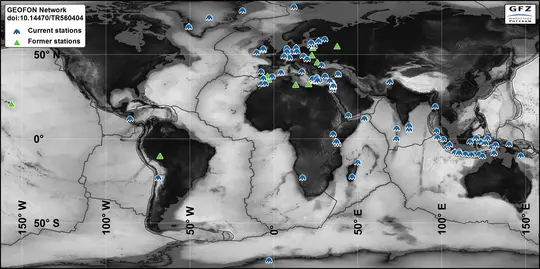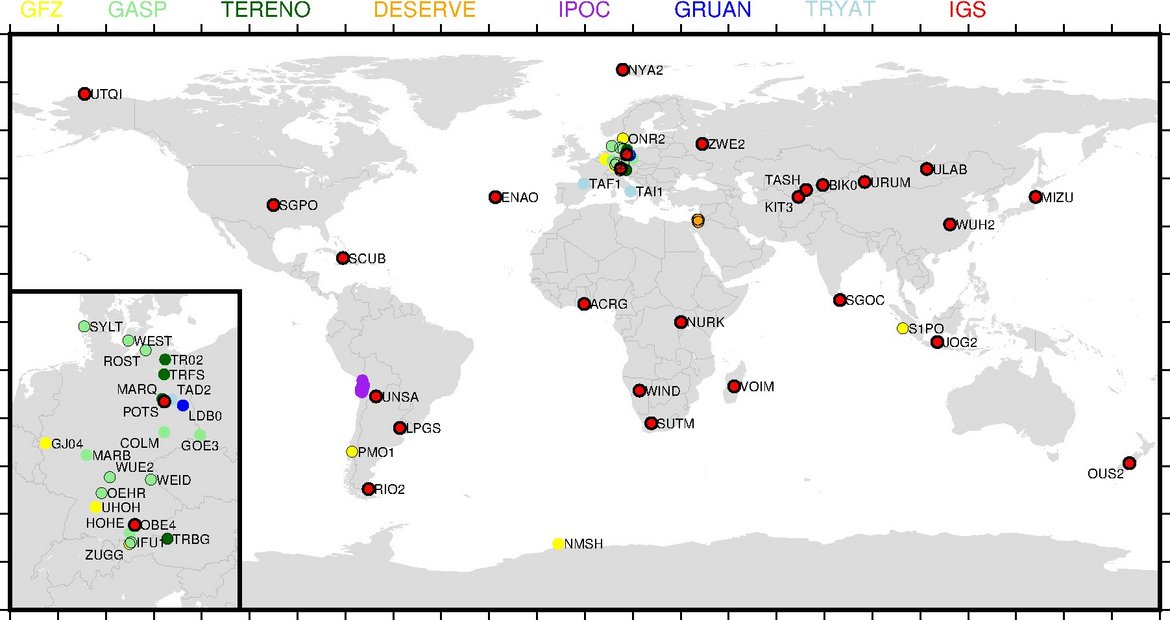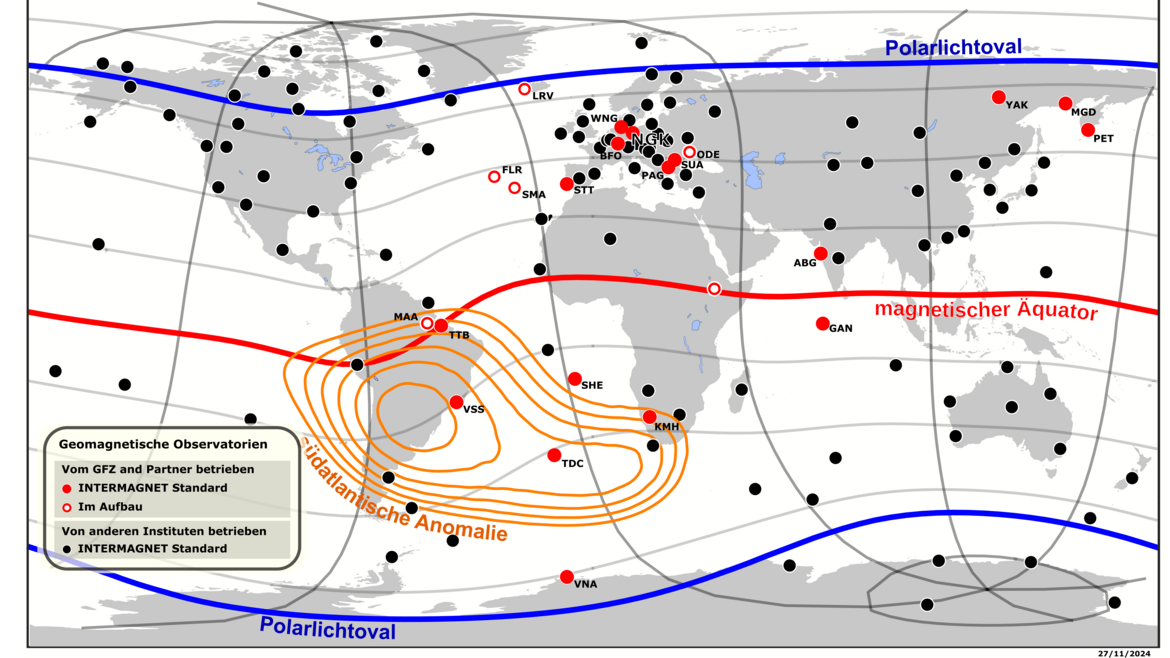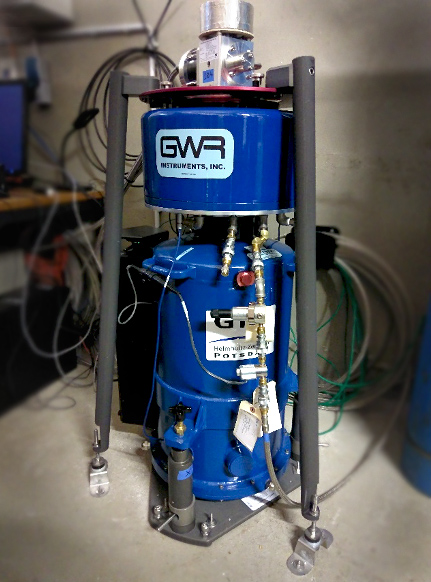Search filter
Clear filters
-
- GFZ
- Department 1 Geodesy
- Section 1.1 Space Geodetic Techniques
- Section 1.2 Global Geomonitoring and Gravity Field
- Department 2 Geophysics
- Section 2.3 Geomagnetism
- Section 2.4 Seismology
- Department 4 Geosystems
- Section 4.4 Hydrology
- Department 5 Geoinformation
- Section 5.1 Data and Information Management
Global Station Networks
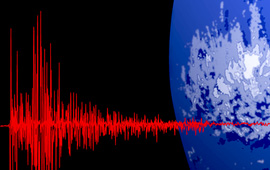
Our global measurement networks are a key tool for understanding the Earth system. Among other things, we want to identify and analyse natural hazards and observe the effects of global climate change. The global monitoring networks are modules of the Modular Earth Science Infrastructure (MESI).
GE Seismic Network - GEOFON Global Seismic Network
In 2018 the GEOFON global seismic network consists of more than 80 active high quality stations with real-time acquisition. The network plays a leading role in global real-time seismology providing valuable data for almost all fundamental and applie…
